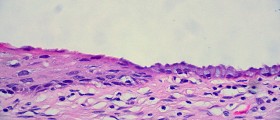
It is a method that can be used by couples who are trying to avoid pregnancy and also by couples who are trying to conceive. The practice of NaProTechnology starts as something women do for themselves. Women who use the method are taught to keep a calendar of events related to menstruation and cervical mucus. The release of cervical mucus around ovulation is a sign of hormonal balance, while a "dry period" may indicate that the follicle releasing the egg never matured, or that the corpus luteum that makes the progesterone needed for implanting the fertilized egg failed to function.
NaProTechnology also regards premenstrual spotting as important diagnostic sign. With this information from the women they treat, physicians who practice naprotechnology can then make better informed diagnoses, testing for the right hormone levels at the right time in the menstrual cycle. The treatment for a hormonal imbalance can be as simple as taking a vitamin supplement--and doctors who practice naprotechnology report some cases in which women were able to conceive after taking vitamin B6 to correct "dry" periods. Or achieving pregnancy may require looking at other fertility issues. Practitioners of NaProTechnology typically test for:
Abnormalities in cervical mucus production, Endometriosis, Hormone defects or imbalances, Pelvic adhesions, Ovulation defects or polycystic ovarian syndrome (PCOS), Tubal occlusion, and Anovulation,in that order. The agenda is to treat infertility as simply as possible with a minimum of medical intervention. Since naprotechnology is usually provided by Catholic physicians, failure to achieve pregnancy after several years does not lead to a recommendation for in vitro fertilization (IVF), but rather for adoption. The Pope Paul VI Institute has published data stating that in comparison with IVF, which results in giving birth about 25 per cent of the time, women who use naprotechnology have babies 82 per cent of the time when the fertility issue was anovulation, 62 per cent of the time when the issue was PCOS, and 57 per cent of the time when the issue was endometriosis. NaProTechnology is a patient method that enables many women to conceive while keeping the basic tenets of their faith, and women regardless of religion to correct fertility issues with a minimum of medical intervention.
- www.cdc.gov/art/index.html
- Photo courtesy of Canadian Film Centre by Flickr: www.flickr.com/photos/cfccreates/10578798086/















Your thoughts on this
Loading...